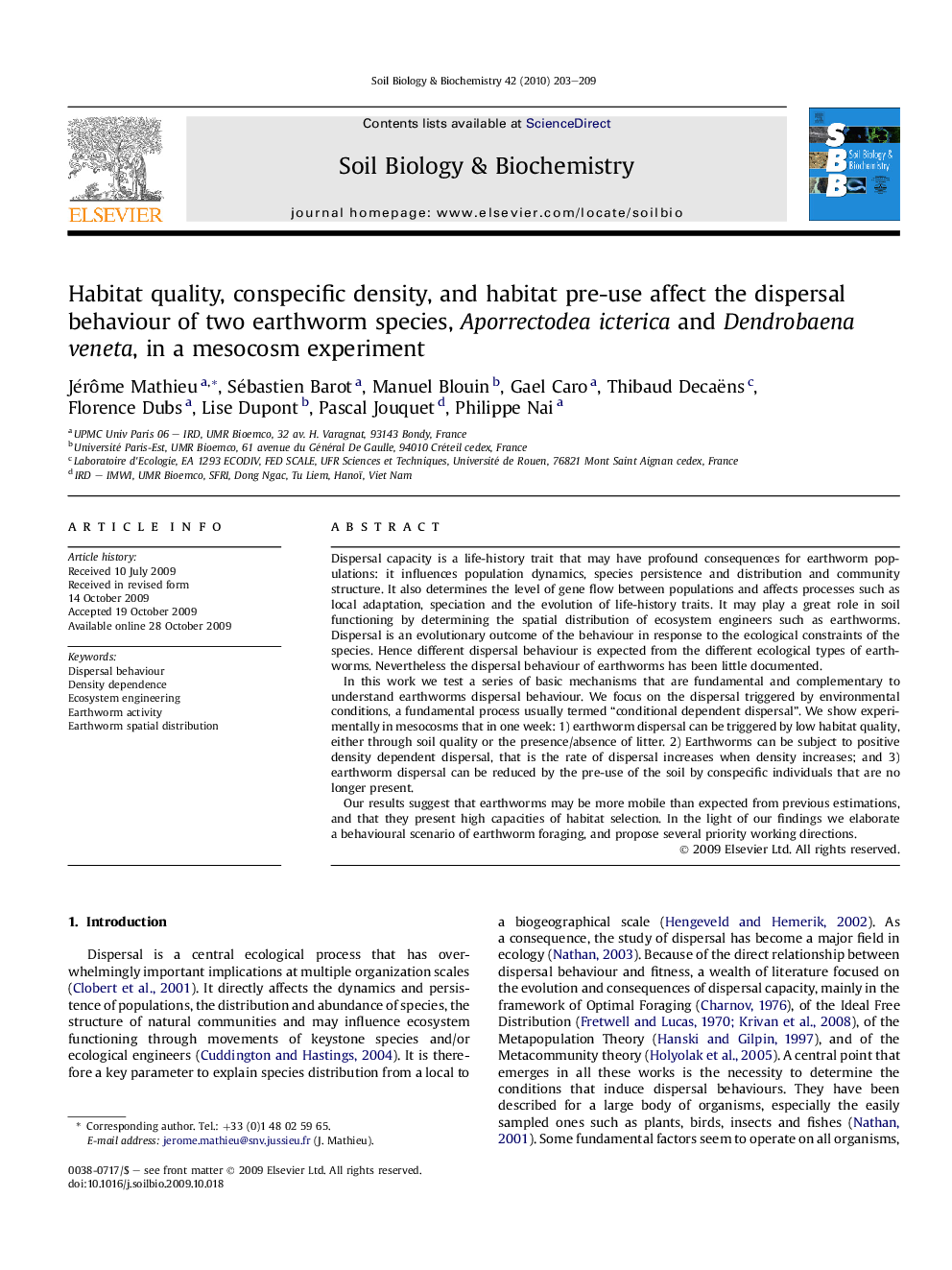| کد مقاله | کد نشریه | سال انتشار | مقاله انگلیسی | نسخه تمام متن |
|---|---|---|---|---|
| 2025128 | 1069982 | 2010 | 7 صفحه PDF | دانلود رایگان |

Dispersal capacity is a life-history trait that may have profound consequences for earthworm populations: it influences population dynamics, species persistence and distribution and community structure. It also determines the level of gene flow between populations and affects processes such as local adaptation, speciation and the evolution of life-history traits. It may play a great role in soil functioning by determining the spatial distribution of ecosystem engineers such as earthworms. Dispersal is an evolutionary outcome of the behaviour in response to the ecological constraints of the species. Hence different dispersal behaviour is expected from the different ecological types of earthworms. Nevertheless the dispersal behaviour of earthworms has been little documented.In this work we test a series of basic mechanisms that are fundamental and complementary to understand earthworms dispersal behaviour. We focus on the dispersal triggered by environmental conditions, a fundamental process usually termed “conditional dependent dispersal”. We show experimentally in mesocosms that in one week: 1) earthworm dispersal can be triggered by low habitat quality, either through soil quality or the presence/absence of litter. 2) Earthworms can be subject to positive density dependent dispersal, that is the rate of dispersal increases when density increases; and 3) earthworm dispersal can be reduced by the pre-use of the soil by conspecific individuals that are no longer present.Our results suggest that earthworms may be more mobile than expected from previous estimations, and that they present high capacities of habitat selection. In the light of our findings we elaborate a behavioural scenario of earthworm foraging, and propose several priority working directions.
Journal: Soil Biology and Biochemistry - Volume 42, Issue 2, February 2010, Pages 203–209